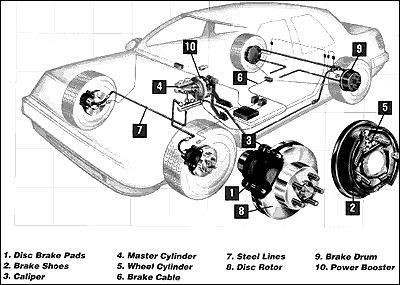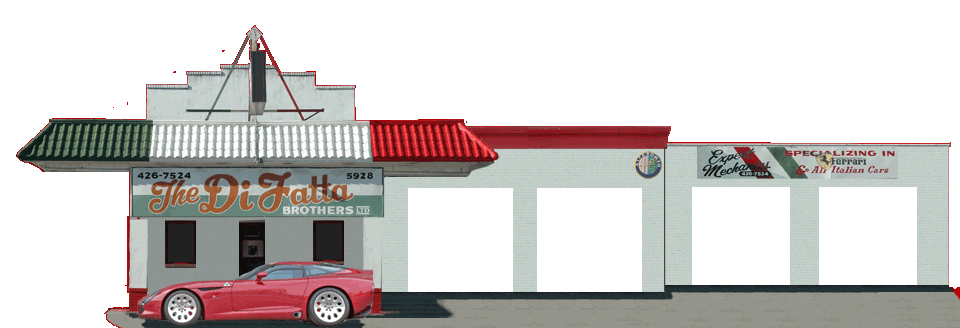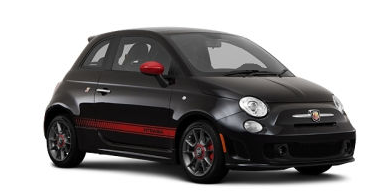Service Tips
BRAKES
All brakes have certain components in common and they all display similar warning signs when they begin to wear out. Fortunately, the symptoms of brake system trouble are very few and usually quite easy to spot.
For example, a low or spongy pedal can signal air in the hydraulic system; a hard pedal can mean worn out shoes or pads. If your red brake warning light stays on, you could have an imbalance in your hydraulic system. Squealing brakes can mean a glazed rotor or that calipers need to be replaced.
It is vital that you have your braking system inspected once per year and have any irregularities promptly checked out. Our diagnostic equipment is state-of-the-art, and our expertise in brakes, along with quality braking parts and components, will increase your car's safety for you and your family!
The brake system is an important safety feature in your vehicle. It is vital that you follow proper procedures for the care and preventive maintenance of your brakes to avoid very costly and potentially catastrophic brake system failure.
There are basically two kinds of brakes: drums and discs.

Typically, you'll find the disc systems in the front of the car and the less expensive drum systems in the rear. Additional components include master cylinders, wheel cylinders, calipers, pistons, shoes, seals and fluid lines.
The most exciting change in recent brake technology is the introduction of computer-controlled anti-lock braking systems (ABS), designed to improve stopping distances while maintaining steering control on varied road surfaces. In an ABS-equipped car, the system takes over during a panic stop with computerized sensors, pulsing the brakes on and off rapidly to prevent wheel lockup and skidding.
Anti-lock brake systems require different repair procedures from traditional systems, so make sure that the mechanics in the shop you choose are fully trained on the computer technology necessary to troubleshoot, diagnose, and repair these sophisticated systems.
Regardless of which braking system your automobile has, we recommend a complete safety inspection at least once a year. If you notice any irregularities between yearly inspections, have them checked out immediately.
It is of utmost importance to have your brakes thoroughly inspected each year. If you notice anything unusual, have it checked out immediately. We will conduct a comprehensive inspection of your braking system, including:
- Inspecting and measuring brake shoes and pads
- Analyzing and measuring discs and drums
- Checking calipers
- Analyzing the master cylinder
- Checking hydraulic lines, hoses and valves
- Troubleshooting
Brake problems can be a real grind. Here are a few warning signs that your brakes need a break:
When your brakes have a problem they will usually let you know. A squealing noise indicates worn or missing hardware or your pads need to be replaced. A grinding or scrunching sound when braking results if your brake lining has been worn to the metal backing.
- Pedal feel is also a good indicator of brake distress. A low or spongy pedal is caused by air in the hydraulic system, or a low but firm pedal may mean your rear shoes or parking brake could need adjustment. A high hard pedal means your power braking system is inoperative due to a defective booster. A pedal that pulses, or hops up and down, during braking indicates the brake drum or rotor is out of round or wobbling, or, on disk brakes, you have a warped rotor.
- A red brake warning light that stays on could result from a defective parking brake switch, low brake fluid level, hydraulic leak or an electrical fault. If rear wheels lock during braking you could have grease on the shoes, out-of-round or oversized brake drums, loose wheel cylinders, or your hydraulic control valves could need service.
- Finally, for the car that pulls to one side during braking, causes include: a defective suspension, leaking wheel cylinder, plugged brake hose, improper tire pressure, or a stuck wheel cylinder or caliper piston.

